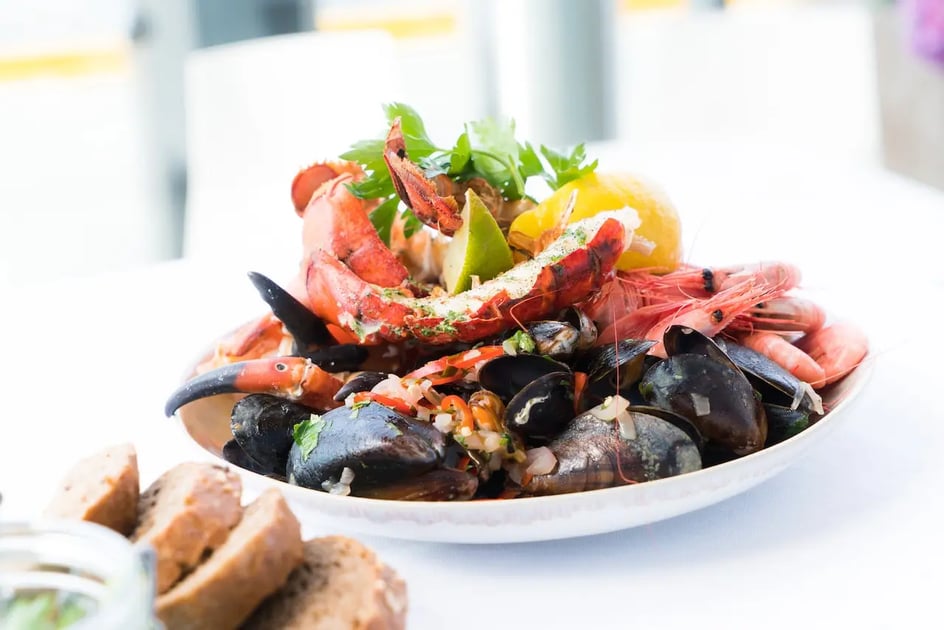The Future Of Fish Farming
January 27, 2025 •Christian Lee

Sustainable seafood production is a growing problem, and vertical fish farms are emerging as the solution of choice. Compared to conventional fish farms, this cutting-edge technique has a number of perks, including lower water use, less environmental effect, and higher fish yields.
This article delves into the sustainable seafood revolution brought on by vertical fish farms.
In order to ensure a steady supply of healthy seafood, vertical fish farms are fast replacing traditional methods. Fish output may be raised while water use is decreased and the environmental effect is lessened with this novel farming technology.
Water efficiency is a major benefit of vertical fish farms. When it comes to keeping fish populations healthy, traditional fish farms may impose a burden on local water resources due to the vast amounts of water needed to do so. Nevertheless, vertical fish farms employ recirculating aquaculture systems (RAS) to filter and reuse water, greatly decreasing the quantity of water required for fish production. Because of this, vertical fish farms are a viable solution for places with few water supplies.
Vertical fish farms not only use far less water, but also have a less ecological footprint. Conventional fish farms often discharge significant quantities of trash and contaminants into the water, which may have negative effects on the aquatic ecology. In contrast, modern filtration systems are used in vertical fish farms to get rid of trash and keep the water fresh. The potential for environmental harm is further minimized since vertical fish farms are often housed inside or in climate-controlled settings, with the use of modern waste removal and water purification technologies. Since they are often built inside or in climate-controlled facilities, vertical fish farms also pose less of a threat to the surrounding ecosystem.
The water savings and reduced environmental impact are only two of the many advantages of vertical fish farms. Fish productivity may also be increased by using vertical fish farms. Due of their vertical construction, these farms can produce more fish on the same amount of area, creating a higher output capacity per square foot of land than conventional fish farms. This implies that vertical fish farms are a more efficient and sustainable solution since they can produce more fish while reducing their footprint.
Many studies have shown that vertical fish farming is more effective than more conventional forms of aquaculture. It has been observed that vertical fish farms can generate 25 times as many fish per unit of water as conventional pond farms can. Three to four times as many fish can be raised in a given space using vertical fish farms as with more conventional techniques, according to research out of the University of Maryland.
Fish farms that are built vertically may be placed anywhere and expanded to any size with relative ease. These farms may be constructed inside or outdoors, making them suitable for locations in cities or other places with limited acreage. This implies that customers will benefit from less carbon emissions caused by seafood transportation as sustainable seafood farming moves closer to them. Because of its modular architecture, vertical fish farms may easily be expanded or replicated to meet the growing demand for environmentally responsible seafood.
There are still hurdles to clear despite the many benefits of vertical fish farms. The enormous expense of setting up and running these farms is a major obstacle. Vertical fish farming also makes use of technology and equipment that might be difficult for farmers to comprehend and utilize without prior training. However, there are companies like Cube 2 from Singapore which has found innovative solutions to overcome these challenges, making vertical fish farms more accessible and sustainable as an alternative for seafood production for farmers.
It is clear that vertical fish farms are a game-changer for the future of seafood sustainability - vertical fish farms are here to stay and they are reshaping the future of seafood sustainability. These fisheries are more efficient and sustainable than traditional methods of producing fish since they use less water, have less of an effect on the environment, and produce more fish.
Although there are still obstacles to be addressed, vertical fish farms are a promising invention in the field of sustainable seafood production due to its potential for innovation and scalability.
**********
Like what you read? Share this article with your network by clicking on the Share buttons below.
You may also be interested in these articles:
- The Downfall of Credit Suisse
- Rise of Hong Kong Property
- How Billionaires Can Be Climate Superheros
- The Death of Meta(verse)
Disclaimer: The views and opinions expressed in this article are those of the author and do not necessarily reflect the official policy or position of Maiden Capital. The information provided is meant as a general guide only and should not be construed as investment advice. You should always consult your financial, legal and tax advisers regarding private equity and real estate investments
